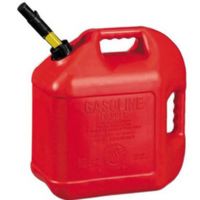Injuries continue to be reported by women implanted with Mirena IUD devices. Mirena is a small, t-shaped plastic device that is inserted into the uterus by a trained healthcare provider. It is intended to provide contraceptive protection for approximately five years. However, many side effects have been associated with the Mirena device, including abscesses, birth defects in newborns, embedment in the uterus, erosion of areas adjacent to the device, perforation of the uterus, intestinal perforations or obstruction, and pelvic inflammatory disease. The most serious cases involve extra-uterine migration of the device, which occurs after the device has been properly placed. In some cases, years after being properly inserted, the Mirena device can perforate the uterus and migrate into the abdominal cavity. This can cause injury to adjacent organs, formation of scar tissue or adhesions, an even a medically necessary hysterectomy. In cases where the Mirena device has migrated into the area of other organs, surgery is almost always required to remove the device. Some women have suffered serious and debilitating or potentially life-threatening complications as a result of migration of the Mirena device.
The Mirena IUD is manufactured by pharmaceutical giant Bayer Healthcare Pharmaceuticals, Inc., which is a U.S. subsidiary of Germany-based Bayer. It was FDA-approved in 2000 as a contraceptive for women who have had at least one child. In 2009, it was also FDA-approved to treat heavy menstrual bleeding in women who prefer intrauterine contraception as their means of birth control. On January 14, 2010, the FDA sent a letter to Bayer, warning Bayer of its marketing practices involving Mirena. Bayer had been engaged in a consumer-directed program in which Mirena representatives travelled to consumers’ homes. According to the warning letter, the manufacturer of Mirena “overstates the efficacy of Mirena, presents unsubstantiated claims, minimizes the risks of using Mirena, and includes false or misleading presentations regarding Mirena.”
If you or someone you know had to have a Mirena IUD device surgically removed because it had migrated from its original position and perforated the uterine lining or an adjacent organ, you may have potential lawsuit against the manufacturer of Mirena. Suthers & Harper is investigating potential Mirena lawsuits involving patients who were implanted with the Mirena IUD device, but had to have it surgically removed after it migrated.
 Georgia Injury Lawyer Blog
Georgia Injury Lawyer Blog


 plastic gas cans are made without a safety feature known as a flame arrestor. The lack of a flame arrestor on a plastic gas can creates a dangerous condition, which could result in the gas exploding.
plastic gas cans are made without a safety feature known as a flame arrestor. The lack of a flame arrestor on a plastic gas can creates a dangerous condition, which could result in the gas exploding.